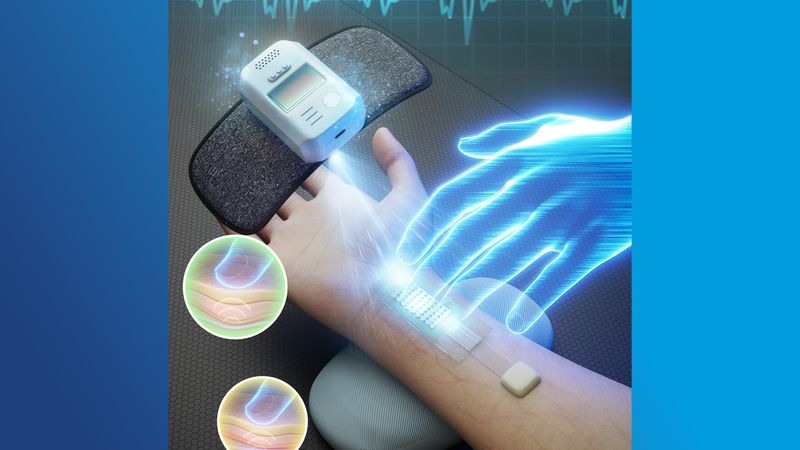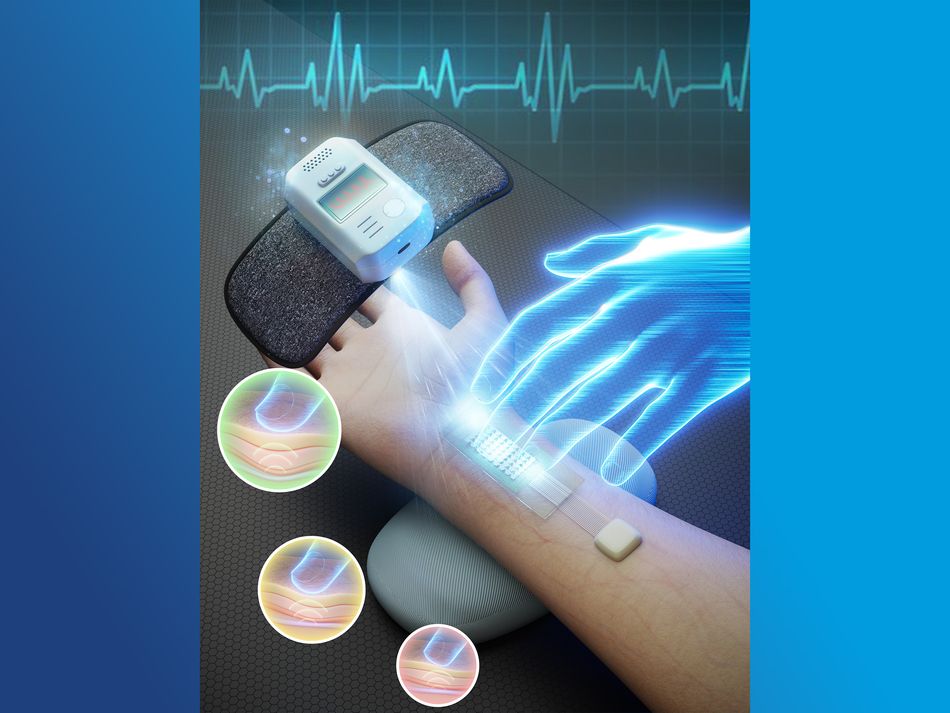Old wisdom meets new tech: Traditional Chinese medicine inspires pulse sensors
A team led by Penn State researchers looked first not to the future, but back — to principles of pulse monitoring in traditional Chinese medicine, first described more than 3,000 years ago.

A team led by Penn State researchers used principles of pulse monitoring in traditional Chinese medicine to design a pressure-sensing platform to identify the optimal pulse signal, which they combined with a machine learning model to also predict blood pressure. Credit: Provided by Huanyu "Larry" Cheng. All Rights Reserved.
This article was first published on
www.psu.eduThis article was discussed in our Next Byte podcast.
The full article will continue below.
Continuously monitoring a person’s pulse can provide meaningful medical information, such as heart rate and, indirectly, blood pressure. However, pulse waves can vary dramatically from person to person and even within the same person at different times of day and during different activities. These variations make it difficult for current wearable pulse sensors to accurately record useful data, which is especially problematic for those with cardiovascular disease or high-risk factors for those diseases.
To solve this problem, a team led by Penn State researchers looked first not to the future, but back — to principles of pulse monitoring in traditional Chinese medicine, first described more than 3,000 years ago. Using these principles, the researchers designed a pressure-sensing platform to identify the optimal pulse signal, which they combined with a machine learning model to also predict blood pressure.
They published their results in Advanced Materials.

“In traditional Chinese medicine, doctors would take the pulse at three positions on the wrist: cun, guan and chi,” said co-corresponding author Huanyu “Larry” Cheng, the James L. Henderson, Jr. Memorial Associate Professor of Engineering Science and Mechanics at Penn State. “As they probed the wrist with three fingers at three locations, they would increase the pressure to measure the pulse from shallow to a bit deeper. This would give a more accurate reading of the pulse signals, regardless of if the person was having an active or sedentary day, for example.”
Cheng said that they incorporated these two concepts, adaptive pressure and multiple locations on the wrist, into the design of a wearable health monitor. The researchers used 3D-printing to print a sensor array — one device with several sensors. This approach allows them to address the issue of data derived from a single point on the wrist and to better collect data from multiple places on the wrist and at several depths.
“The sensor array is fully printed, both because that is less expensive than more traditional methods of assembling a sensor, and because then the sensor array is easier to manipulate, which makes it a better wearable device,” Cheng said, explaining that by fully printing the device, the researchers can rapidly prototype the individualized pressure sensor array. “The pressure sensor array also creates a 3D map of the pulse information across time.”
The team then integrated the sensor array with a machine-learning model to accurately predict other health monitoring information, such as blood pressure, the researchers said.
“With a machine learning algorithm, we can predict the blood pressure in terms of different values from systolic, diastolic and medium artery blood pressure, all from the 3D-pulse mapping,” said co-author Libo Gao, associate professor at Xiamen University.
The researchers said they plan to continue developing their device, and its integration with machine learning, with the hope that the approach will help improve health care monitoring in the future.
The other authors on the paper are Guirong Wu, Zengxing Zhang and Chenyang Xue, Xiamen University; Xikuan Zhang and Zekun Yang, the North University of China; Fei Lu and Xueli Nan, Shanxi University; and Xin Wang, of both Xiamen University and Shanxi University.
This research was supported by the National Key Research and Development Program of China, the National Natural Science Foundation of China, the Science and Technology on Vacuum Technology and Physics Laboratory Fund, the Fundamental Research Funds for the Central Universities and the Xiaomi Young Talents Program/Xiaomi Foundation, Shenzhen Science and Technology Program.